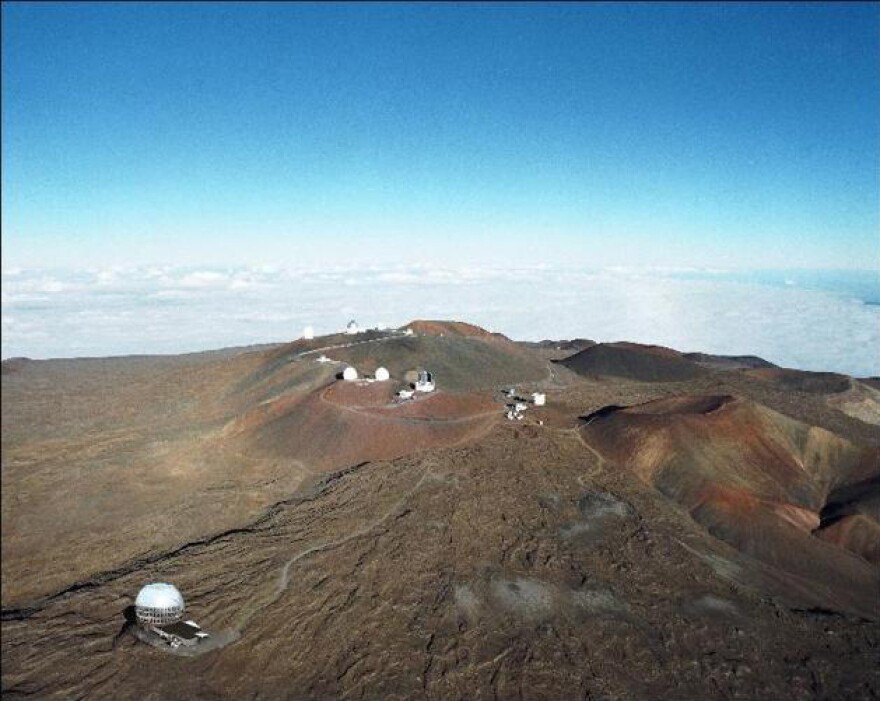The ongoing debate over the controversial Thirty Meter Telescope has reverberated beyond the state. Among astronomers, the $1.4 billion project planned atop Mauna Kea has been a point of contention. HPR’s Molly Solomon spoke with a spectrum of opinions and has this report.

Emily Rice has spent her career studying low mass stars, brown dwarfs, and exoplanets. She’s an assistant professor of astrophysics at the College of Staten Island, CUNY. And while she’s nearly 5,000 miles away from Hawaii, she’s familiar with the conflict going on now at the summit of Mauna Kea. "I've always known that Mauna Kea is sacred," said Rice. "And I knew TMT was not without controversy"
As a graduate student at UCLA, Rice would regularly use the Keck Observatory for her research, one of the 13 telescopes on the mountain. But it wasn’t until the recent protests, which have drawn international attention, that Rice began to question her stance on the TMT. "I'm realizing that something I've benefited from is something that causes pain to other people. That's something that as a scientist—as a human being—I don't want to have a part in," said Rice. "I don't want to use it if we have to override the wishes of the Hawaiian community in order to build it."

Rice is not the only scientist who feels conflicted. Keolu Fox says the protests have dominated conversation among colleagues. A University of Washington PhD candidate in genetics, Fox shared his reasons for opposing the TMT with an astrophysics professor, prompting a larger discussion within the department. As a researcher who’s also native Hawaiian, he often feels like he’s straddling two worlds. "On the side of kanaka maoli, we're put in a hard place," said Fox. "You have to represent your kupuna, you have to represent your ohana. But at the same time we need to publish papers in Nature and Science. This is the currency we use to move forward."

Jessica Lu, an astronomer at the Institute for Astronomy at the University of Hawaii at M?noa, says the tone of discussion changed after last month’s arrests of protesters. "The conversations as a whole were always there, they were always being had between people. But it has intensified in the sense that we talk about it nearly every day now." Lu, a supporter of the TMT, believes the protests have escalated because of a lack of outreach from the science community. "Astronomy just seems so universal to me," said Lu. "I feel like some of this is just an expression of, I wonder if I can do a better job at reaching out and talking to people about what astronomy means to me and to them."
Astrophysicist Emily Rice says the discussion has put her colleagues in a position that’s uncomfortable and unfamiliar. "This is something that astronomy has so very rarely had to deal with," said Rice. "We're kind of the least evil of the sciences: we don't do animal or human research, we don't develop weapons, we don't make a lot of money. And so we're not really used to dealing with problems like this."
The issue has grown to include questions about diversity within the astronomy community. Next week, we’ll take you to a campus where a short email in support of the telescope has led to a lengthy discussion that still continues.




